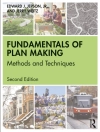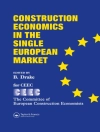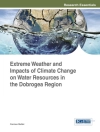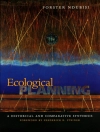This book brings together authors with expertise in a wide range of fields to provide an up to the minute overview of the most important problems relating to mercury in the environment. The book reflects growing concern over the likelihood of harmful effects to human health and sensitive ecosystems posed by mercury in the light of increasing fossil fuel combustion, mercury use in a range of manufactured goods, and the lack of emission control policies. Concern has been expressed at local, national, and international levels; in the last three years both the European Commission and UNEP have published reports on mercury in the environment. Growing concern has led to an increased effort to understand the fate of mercury in the environment, including primary production and trade in mercury, emissions from manufacturing and power generation, natural emissions and re-emission, atmospheric transport and transformation, deposition patterns, uptake by biota, and eventual health impacts on living organisms. The increasing specialisation, and amount of research in the numerous scientific fields associated with the study of the fate of mercury in the environment, make the publication of this book both necessary and timely. For experts, and non-experts, who require both the broader picture, as well as an awareness of the latest progress in the fields relevant to mercury research, this book provides the most comprehensive and up to date overview available. The book has five sections.
表中的内容
International and Regional Perspectives.- Global Mercury Production, Use and Trade.- Mercury Emissions from Anthropogenic Sources: Estimates and Measurements for Europe.- Legislation and Policy Concerning Mercury in the European Union.- The DG Research Perspective-Research on Hg Supported by the European Commission.- Perspective on Mercury: Progress Through Cooperation.- Where We Stand on Mercury Pollution and its Health Effects on Regional and Global Scales.- Monitoring and Analytical Methods.- The Monitoring and Modelling of Hg Species in Support of Local, Regional and Global Modelling.- Determination of Mercury and its Compounds in Water, Sediment, Soil and Biological Samples.- Chemical and Physical Processes.- Environmental Chamber Studies of Mercury Reactions in the Atmosphere.- Air-sea Exchange and Marine Boundary Layer Atmospheric Transformation of Hg and their Importance in the Global Mercury Cycle.- Terrestial Hg Fluxes: Is the Next Exchange Up, Down, or Neither?.- Chemical Transformation of Gaseous Elemental Hg in the Atmosphere.- Modelling Chemical and Physical Processes of Hg Compounds in the Marine Boundary Layer.- Modelling Transport and Transformation of Hg and its Compounds in Continental Air Masses.- Human Exposure.- Exposure to Mercury in the Americas.- Exposure to Hg in the General Population of Europe and the Arctic.- Methylmercury Exposure in General Populations of Japan, Asia and Oceania.- Mercury Pollution from Artisanal Gold Mining in Block B, El Callao, Bolivar State, Venezuela.- An Ecosystem Approach to Describe the Mercury Issue in Canada: From Mercury Sources to Human Health.- The GEF/UNDP/UNIDO Global Mercury Project — Environmental and Health Results from a Small-Scale Gold Mining Site in Tanzania.- Development of Programs to Monitor Methyl-Mercury Exposure and Issue Fish Consumption Advisories.- Health Effects and Risk Assessment.- Regional Case Studies.- Dynamic Processes of Atmospheric Hg in the Mediterranean Region.- Spatial and Temporal Variability of Atmospheric Hg in North-Western and Central Europe-Observations on Different Time Scale.- Atmospheric Hg: A Decade of Observations in the Great Lakes.- Recent Trends in Hg Emissions, Deposition, and Biota in the Florida Everglades: A Monitoring and Modelling Analysis.- Mercury Pollution in China — An Overview.- Mercury Pollution in the Arctic and Antarctic Regions.- EMEP Regiona/Hemispheric Mercury Modelling: Achievements and Problems.












